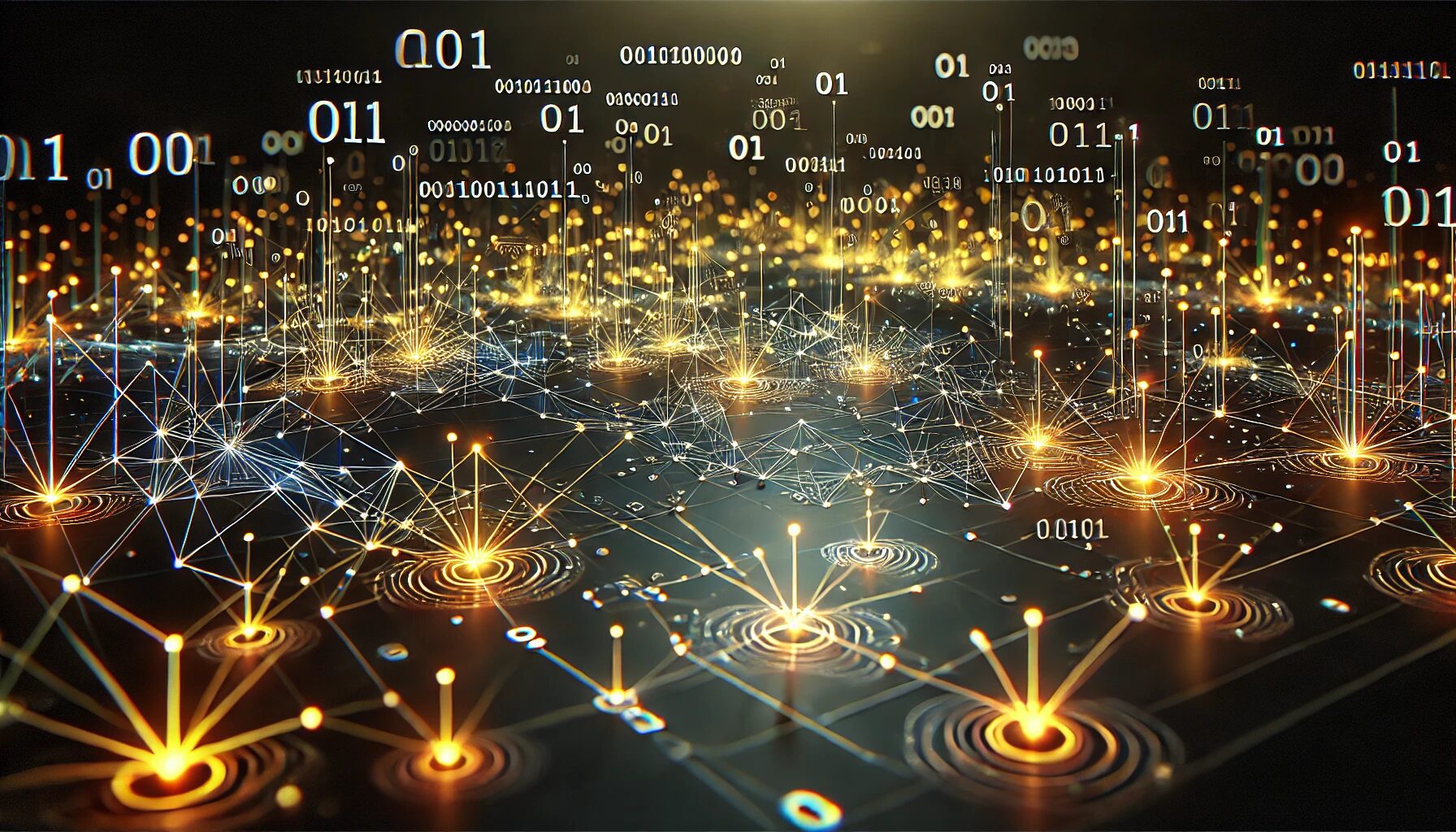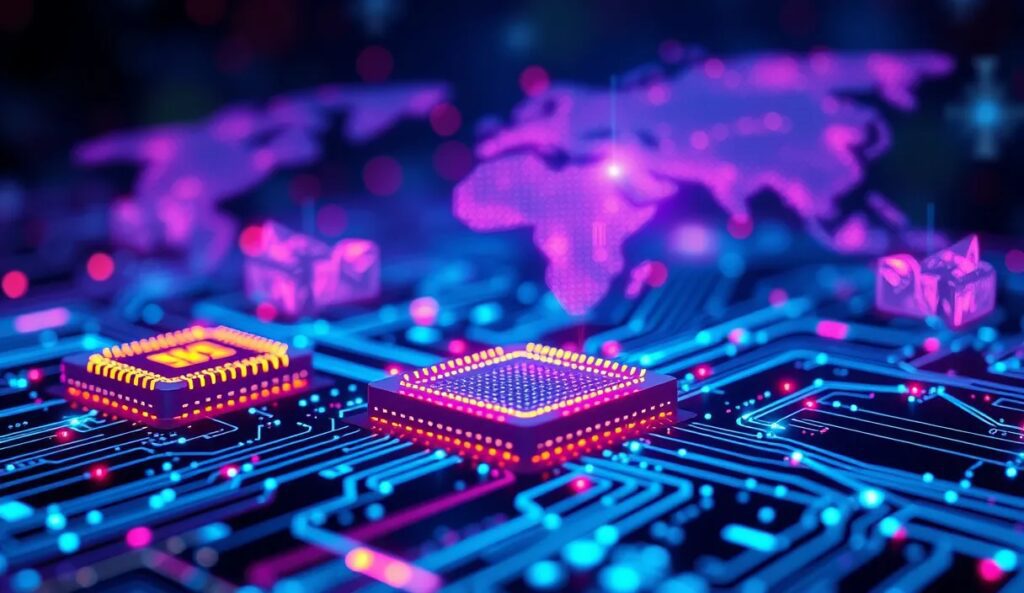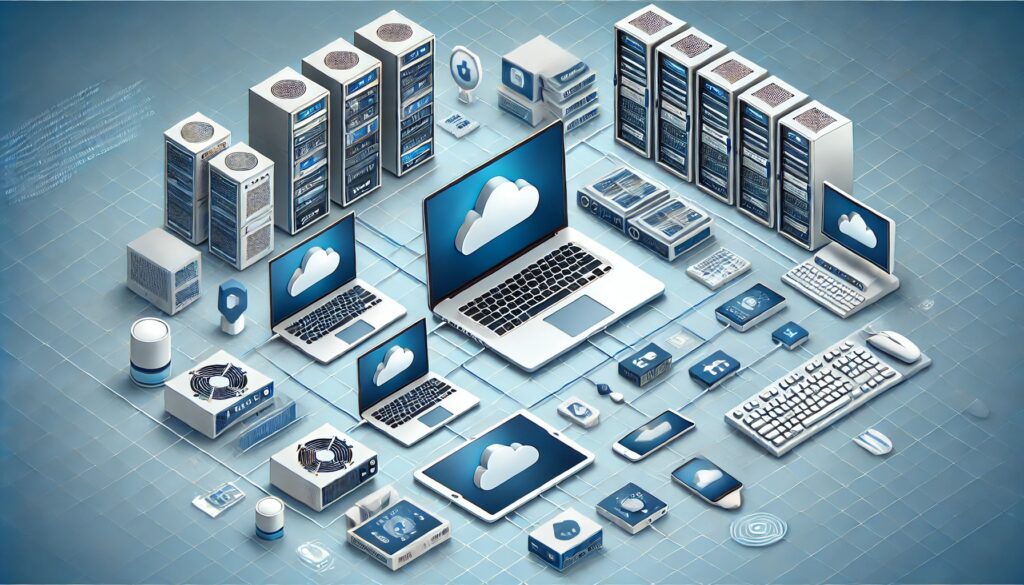
The Rise of Edge AI in the IoT Ecosystem
Traditional IoT setups send massive amounts of data to the cloud for processing. But with more devices in use, this creates bottlenecks, latency issues, and higher costs. Edge AI steps in by processing data locally, allowing for faster, more real-time decision-making.
This shift reduces bandwidth usage and strengthens privacy, as sensitive data doesn’t need to travel across networks unnecessarily. Imagine a smart camera detecting a security threat and sending an alert instantly—no cloud required.
Why Real-Time Analytics Is a Game Changer
Real-time analytics isn’t just about speed; it’s about intelligence at the moment. In applications like autonomous vehicles, factory automation, and healthcare monitoring, every millisecond counts.
Edge AI analytics eliminates delays by cutting the round trip to the cloud. For instance, an autonomous car needs to detect obstacles and respond in real-time. Delayed insights could lead to catastrophic outcomes.
These advancements also benefit industries with intermittent or limited internet access. With AI on the edge, they can maintain critical functions even offline.
Cutting Latency with Decentralized Processing
Breaking Free from the Cloud
The centralized cloud model struggles to keep up with the rapid growth of IoT devices. Decentralized AI processing solves this by distributing workloads across edge devices.
This decentralized approach avoids latency caused by transmitting large datasets back and forth. It’s a leap forward for industries like logistics, where real-time route optimization can save time and money.
Furthermore, decentralization enhances network resilience. If a central cloud server experiences downtime, edge devices can still function independently. This reliability is critical in sectors like healthcare and public safety.

Smarter Devices, Faster Decisions
Edge AI isn’t just about faster processing—it makes devices smarter. By embedding machine learning models into edge devices, they can “learn” and adapt over time.
Take smart thermostats, for example. Instead of relying on cloud input, they learn user preferences locally and adjust automatically, offering a seamless experience.
This localized intelligence also ensures data privacy. Since data doesn’t leave the device, sensitive information stays secure, fostering trust in IoT ecosystems.
The Role of Hardware in Accelerating Edge AI
Specialized Chips for Edge AI
The rapid growth of edge AI has spurred the development of hardware optimized for real-time data processing. Specialized chips like GPUs, TPUs, and edge AI processors power these advancements.
These chips are designed for energy efficiency, making them ideal for IoT devices with limited battery life. By enabling faster computations with minimal power, they ensure seamless operation in remote or mobile settings.
Innovative solutions like NVIDIA’s Jetson platform and Google’s Edge TPU demonstrate how hardware aligns with edge AI needs. These tools are empowering industries to deploy AI where it’s needed most.
Optimized for Low-Power Environments
Unlike traditional systems, edge AI hardware is tailored for low-power environments. Devices like drones, wearable tech, and smart home gadgets rely on efficient chips to process data without constant recharging.
This efficiency opens doors for AI in rural areas, disaster zones, or other off-grid locations. It’s a pivotal step for bringing advanced analytics to underserved regions worldwide.
Use Cases Highlighting Edge AI’s Impact
Revolutionizing Industrial IoT (IIoT)
In manufacturing, real-time monitoring of machinery can prevent costly downtime. Sensors analyze performance and detect issues before they escalate.
Edge AI helps factories maintain optimal output without needing cloud connectivity, improving efficiency and reducing operational costs.
Advancing Smart Cities
Smart city initiatives rely on edge AI for tasks like traffic management, energy optimization, and public safety. For instance, smart streetlights can adjust brightness based on real-time pedestrian or vehicle activity, reducing energy waste.
These localized systems minimize delays, creating safer, more efficient urban environments.
Enhancing Security and Privacy with Edge AI

Keeping Data Local for Better Privacy
One of the standout advantages of edge AI analytics is its ability to keep sensitive data close to its source. Unlike cloud-based systems that transmit information across vast networks, edge AI processes data locally.
This is crucial for privacy-sensitive applications like healthcare, where personal information must remain secure. For example, wearable health monitors can analyze a user’s vitals in real-time and send only the necessary summaries to doctors, avoiding full data transmission.
In addition, this localized processing helps businesses comply with strict data protection regulations, such as GDPR or HIPAA. The result? Improved trust and reduced legal risks.
Strengthening Security Against Cyber Threats
With edge AI, security measures are baked into the devices themselves. By analyzing anomalies directly on the edge, IoT systems can detect and neutralize cyber threats faster.
For instance, smart home devices can identify suspicious activity, like unauthorized login attempts, without waiting for cloud instructions. Similarly, critical infrastructure, such as power grids, benefits from real-time anomaly detection to prevent sabotage.
This shift makes IoT ecosystems more resilient against breaches and ensures uninterrupted service.
Edge AI in Action: Transforming Real-World Applications
Autonomous Vehicles: Safety at the Speed of Thought
Edge AI is driving the future of autonomous transportation by enabling vehicles to make split-second decisions. Sensors process real-time data about road conditions, obstacles, and traffic without relying on cloud input.
For example, Tesla’s Autopilot system uses edge AI to analyze surroundings and react in milliseconds. This responsiveness not only enhances safety but also improves user trust in self-driving technology.
Healthcare: Life-Saving Speed and Accuracy
In healthcare, edge analytics powers innovations like AI-assisted diagnostic devices and emergency monitoring systems. Portable devices can analyze a patient’s condition instantly, alerting caregivers when needed.
For instance, portable ultrasound machines equipped with edge AI provide immediate imaging insights in remote areas. This speeds up diagnosis and improves care in underserved regions.
The Future of IoT: Evolving with Edge AI

Scaling IoT Networks with Intelligence
As IoT adoption soars, the volume of data generated is staggering. Edge AI is the key to scaling these networks efficiently. By distributing intelligence across devices, IoT systems can handle growth without overwhelming infrastructure.
This scalability is vital for industries like agriculture, where IoT-enabled drones monitor crops and adjust irrigation in real-time. With edge AI, such systems can expand without depending on constant cloud upgrades.
Integrating AI and 5G for Seamless Performance
The combination of edge AI and 5G technology is unlocking unprecedented possibilities. Faster connectivity paired with on-device analytics ensures near-instant responses, even in complex scenarios like remote surgeries or disaster response.
This synergy creates a future where edge AI-powered IoT devices become an indispensable part of daily life, from smart homes to space exploration.
Conclusion: A Smarter, Faster, and More Resilient IoT Future
Edge AI is revolutionizing how IoT devices operate, offering real-time analytics, enhanced privacy, and reduced latency. By minimizing reliance on centralized cloud systems, edge AI ensures faster decision-making and greater reliability across industries.
From autonomous vehicles navigating complex roads to smart cities optimizing energy use, the possibilities are endless. As advancements in hardware and connectivity continue, edge AI will play an even more significant role in shaping a smarter, more connected world.
The era of decentralized intelligence is here, and it’s setting the stage for an IoT ecosystem that’s not just efficient—but transformative.
FAQs
Why is real-time data analytics important for IoT devices?
Real-time analytics enables IoT devices to make decisions and take action almost instantly. This is crucial for applications where delays can have serious consequences.
For instance, in industrial automation, sensors on machines can detect early signs of malfunction and shut them down immediately, preventing accidents or costly breakdowns.
How does edge AI improve data privacy?
By keeping data processing on the device, edge AI significantly reduces the amount of information sent over the network. This minimizes exposure to cyber threats and ensures sensitive data remains secure.
A practical example is healthcare wearables, like fitness trackers, which analyze user vitals locally and transmit only summary data to healthcare providers, protecting the user’s personal health information.
Can edge AI function without internet connectivity?
Yes, edge AI can operate offline by processing data directly on the device. This makes it ideal for remote locations or situations with unreliable connectivity.
For example, agricultural drones equipped with edge AI can analyze crop health in real time and make adjustments without requiring an internet connection, ensuring uninterrupted operation.
What industries benefit most from edge AI analytics?
Edge AI has transformative applications in industries such as healthcare, automotive, manufacturing, and smart cities.
In healthcare, portable diagnostic tools with edge AI can provide immediate results in emergency scenarios. In automotive, autonomous vehicles use edge AI for real-time navigation and obstacle detection, ensuring safety and precision.
What is Edge AI, and how does it differ from cloud computing?
Edge AI involves running machine learning models directly on IoT devices at the “edge” of a network, close to where data is generated. This contrasts with cloud computing, which processes data at centralized servers often located far from the device.
For example, smart speakers like Amazon Echo use edge AI to recognize wake words (like “Alexa”) instantly without waiting for a cloud response. This ensures faster interaction and improved user experience.
Why is real-time data analytics important for IoT devices?
Real-time analytics empowers IoT devices to act immediately on the data they gather, making them indispensable in time-critical scenarios.
For instance, autonomous drones used in disaster relief analyze environmental data in real time to locate survivors or assess structural damage. This enables responders to act quickly and effectively in life-threatening situations.
In retail, smart checkout systems use real-time edge analytics to scan items and process payments without delays, improving the customer experience.
How does edge AI improve data privacy?
Since edge AI processes data on the device itself, it reduces the amount of sensitive information transmitted over networks. This approach enhances privacy and security by limiting data exposure.
For example, smart home devices like thermostats and cameras equipped with edge AI analyze user behavior locally. This keeps sensitive details, such as daily routines or security footage, private and away from centralized servers vulnerable to breaches.
Similarly, AI-enabled medical devices, such as portable ECG machines, can analyze patient data locally and share only anonymized insights with healthcare providers.
Can edge AI function without internet connectivity?
Yes, edge AI can operate entirely offline because it doesn’t rely on constant cloud communication. This feature makes it ideal for rural, remote, or disaster-prone areas where connectivity is limited or unavailable.
A great example is wildlife monitoring systems. Edge AI-powered sensors track animal movements and detect poaching activities in isolated regions without needing a continuous internet connection.
Another example is self-driving mining vehicles, which rely on edge AI to navigate hazardous areas underground, where internet access is often non-existent.
What industries benefit most from edge AI analytics?
Healthcare, automotive, manufacturing, agriculture, and smart cities are among the biggest beneficiaries of edge AI.
In manufacturing, edge AI enables predictive maintenance by analyzing machinery performance in real time. This prevents costly downtime and reduces operational risks.
In agriculture, AI-enabled irrigation systems use edge computing to monitor soil conditions and adjust water delivery immediately, optimizing resources and boosting yields.
In smart cities, edge AI powers traffic management systems. For instance, AI-enabled cameras can detect congestion and adjust traffic signals dynamically, reducing delays and emissions.
Resources for Learning More About Edge AI and Real-Time Data Analytics
Key Articles and Whitepapers
- “The Future of Edge AI” by NVIDIA
This comprehensive resource explores how edge computing is transforming industries, with case studies and hardware insights.
Read here - “Real-Time Analytics in IoT: Challenges and Opportunities” by Gartner
A detailed report on the role of real-time analytics in IoT systems, including edge AI benefits and limitations.
Visit Gartner - “From Cloud to Edge: Shaping the Future of AI” by Forrester Research
Explains how businesses can transition from cloud-reliant models to edge AI systems for greater efficiency.
Influential Blogs and Websites
- Edge AI Insights Blog by Arm
Covers the latest innovations in edge AI hardware and software solutions. - IoT for All
A leading blog for IoT-related news, including in-depth articles on edge AI applications.
Visit IoT for All - Analytics Vidhya
Offers beginner-friendly tutorials and case studies on real-time data analytics and AI implementation.
Visit Analytics Vidhya
Academic and Technical Books
- “Edge AI: Convergence of Edge Computing and Artificial Intelligence” by Xiaofei Wang et al.
A must-read for understanding the technical aspects and real-world applications of edge AI. - “Designing Machine Learning Systems for Edge Devices” by Peter Warden
This book focuses on lightweight machine learning models tailored for IoT and edge computing environments. - “Real-Time Systems and Their Applications in IoT” by Seifedine Kadry et al.
A technical resource for understanding real-time systems and their role in IoT and edge computing.
Online Courses and Tutorials
- Coursera: “Edge AI and Computer Vision for IoT” by Intel
Learn about edge AI fundamentals, computer vision, and IoT device integration.
Enroll here - Udemy: “Deploying Machine Learning Models to Edge Devices”
Hands-on guidance for developing and deploying AI models on edge devices. - edX: “IoT Programming and Big Data”
A course covering IoT development and analytics, with insights into edge computing’s role in the ecosystem.
Visit edX
Developer Tools and Platforms
AWS IoT Greengrass
Amazon’s platform for running machine learning and analytics on IoT devices at the edge.
Visit AWS IoT Greengrass
NVIDIA Jetson Platform
A leading hardware and software suite for deploying edge AI applications, especially in robotics and computer vision.
Explore NVIDIA Jetson
Google Edge TPU
Optimized for low-power AI computation on IoT devices, this tool is essential for edge AI developers.
Learn about Edge TPU